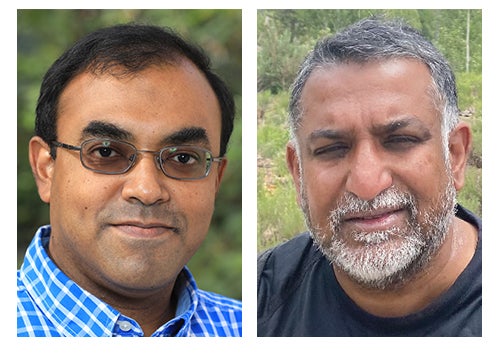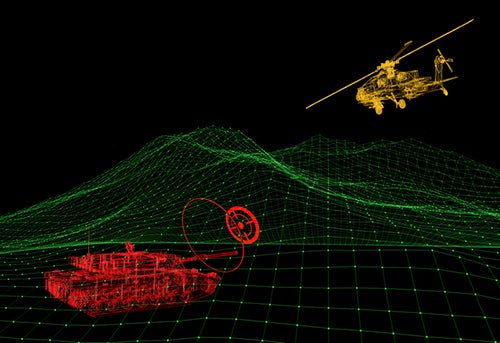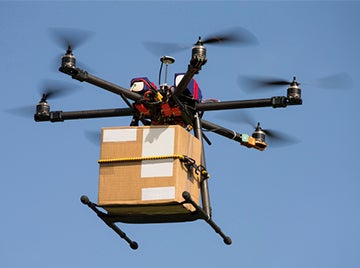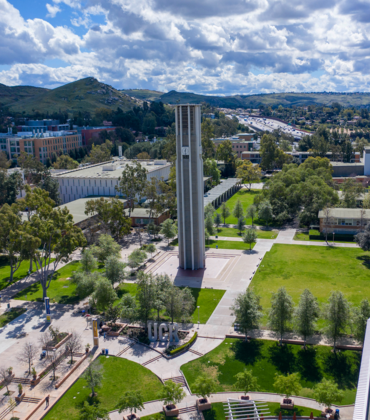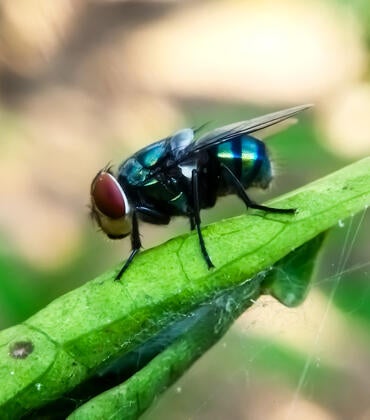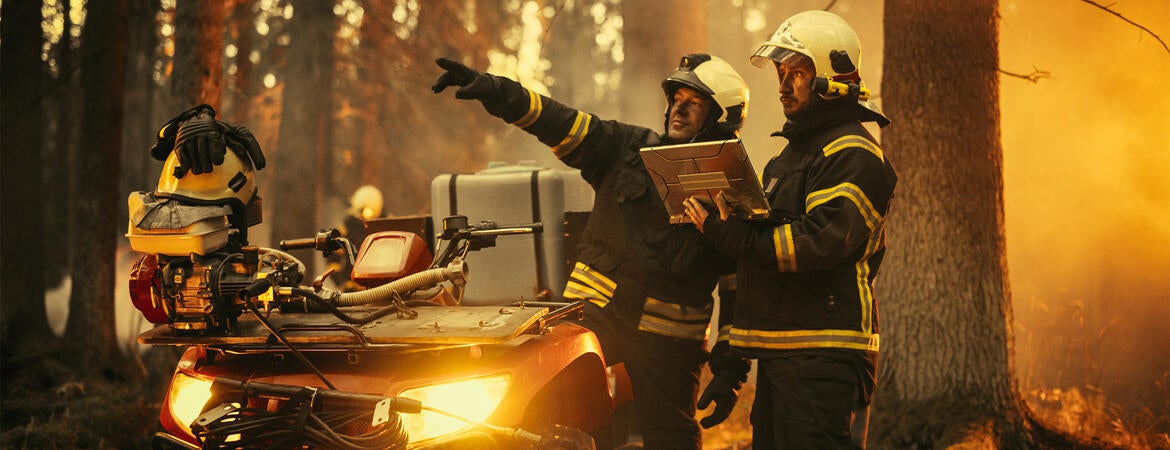
When a natural disaster strikes, first responder managers face a flood of data — from drones, sensors, cameras, satellites, police, firefighters, and citizens — that must be sorted, secured, and understood to make sound decisions in a race to save lives.
A team of computer scientists and engineers at UC Riverside is tackling that challenge head-on with new Department of Defense funding to design AI-driven network technology that can think, adapt, and protect itself during rapidly changing circumstances.
UCR will receive an $8 million grant to develop the Adaptive Autonomous and Secure Heterogeneous Integrated (AASHI) System of Systems, a next-generation framework for how machines communicate and cooperate across land, air, sea, and cyberspace. The funding is for a second phase of the research that began in 2020.
“This is about managing a large network of diverse computing devices that must operate in harsh, dynamic settings with active adversaries,” said Amit Roy-Chowdhury, a professor in the Department of Electrical and Computer Engineering and the project’s principal investigator. “At a very high level, we need to prioritize data, protect it, and analyze it all at the same time.”
The Department of Defense is funding the research because of its potential use in rapidly changing battlefield scenarios. The system could potentially integrate information from drones, satellites, allies, and ground troops to warn commanders that an enemy is attacking from unexpected directions or by unexpected means — even when one or more of the communication channels become disabled. It could also help robotic vehicles coordinate maneuvers or allow sensor arrays to detect and isolate a cyber breach before it spreads.
Roy-Chowdhury said better battlefield coordination would be just one application of the technology. It thus can be used for numerous civilian applications, including disaster response, said Roy-Chowdhury, who is co-director of the UC Riverside Artificial Intelligence Research and Education Institute, or RAISE. Amit Roy-Chowdhury, left, and Srikanth V. Krishnamurthy
The innovations could also have commercial applications, added Srikanth V. Krishnamurthy, professor and vice chair for academic personnel for UCR’s Department of Computer Science and Engineering. “Even though they are targeted toward military applications, these technologies could potentially be useful in day-to-day commercial cellular 6G networks as we move toward next-generation wireless communications, where AI will play an integral role,” he said.
For example, communication networks that simultaneously stream sports and movies as well as cellular telephone service would be able to quickly identify and compensate for security vulnerabilities, he said.
The research seeks to overcome three interconnected hurdles:
First, it aims to integrate a wide range of devices — from small, low-powered sensors to sophisticated, AI-equipped drones — into a cohesive mission network. The goal is to create synergy among devices with vastly different capabilities, enabling them to work in concert rather than in isolation.
Second, the team is exploring how AI can determine which data is most valuable and where it should be processed. In dynamic and often chaotic environments, not all data can be handled the same way. AI tools will help prioritize information, deciding whether it should be analyzed locally or sent elsewhere — a crucial step in speeding up decision-making on the ground.
The third focus is on cybersecurity. With connections between these devices constantly shifting as conditions change, maintaining secure communication links presents a formidable challenge. Researchers are developing systems that defend against cyber threats even as networks adapt in real time.
Instead of treating communication as a mere stream of bits, AASHI networks will interpret the meaning — or “semantics” — of data as it moves through the system. A camera feed might carry vital information about enemy movement, while a temperature sensor reading could be routine. By understanding such differences, the network can automatically assign more bandwidth and computing power to where it matters most.
Machine-learning models embedded throughout the system will allow devices to detect anomalies, reroute information when links fail, and even identify potential intrusions.
Because not every node — say, a soldier’s handheld device — has the same computing strength as a command-center server, the network must continually decide where to process information for maximum speed and efficiency.
“In commercial settings,” Krishnamurthy said, “we have the Internet of Things — drones delivering packages, private 5G networks, video surveillance — all of which could benefit from the kind of secure, adaptive networking we’re developing.”
The four-year project will support dozens of graduate and undergraduate students, offering hands-on experience at the intersection of AI, cybersecurity, and communications. Other Bourns faculty involved in the grant research are Basak Guler, Yingbo Hua, Hang Qiu, Zhiyun Qian, Emiliano De Cristofaro, Michalis Faloutsos, and Zhaowei Tan. UCR is also collaborating with UC San Diego, which is receiving a $1.3 million share of the funding.
In a previous phase, funded by a $7.5 million grant in 2020, nearly 100 UCR students gained similar research experience. Roy-Chowdhury expects that level of student engagement to continue as AASHI moves forward.
Header image: Firefighters using a laptop to input field data (Getty Images)
